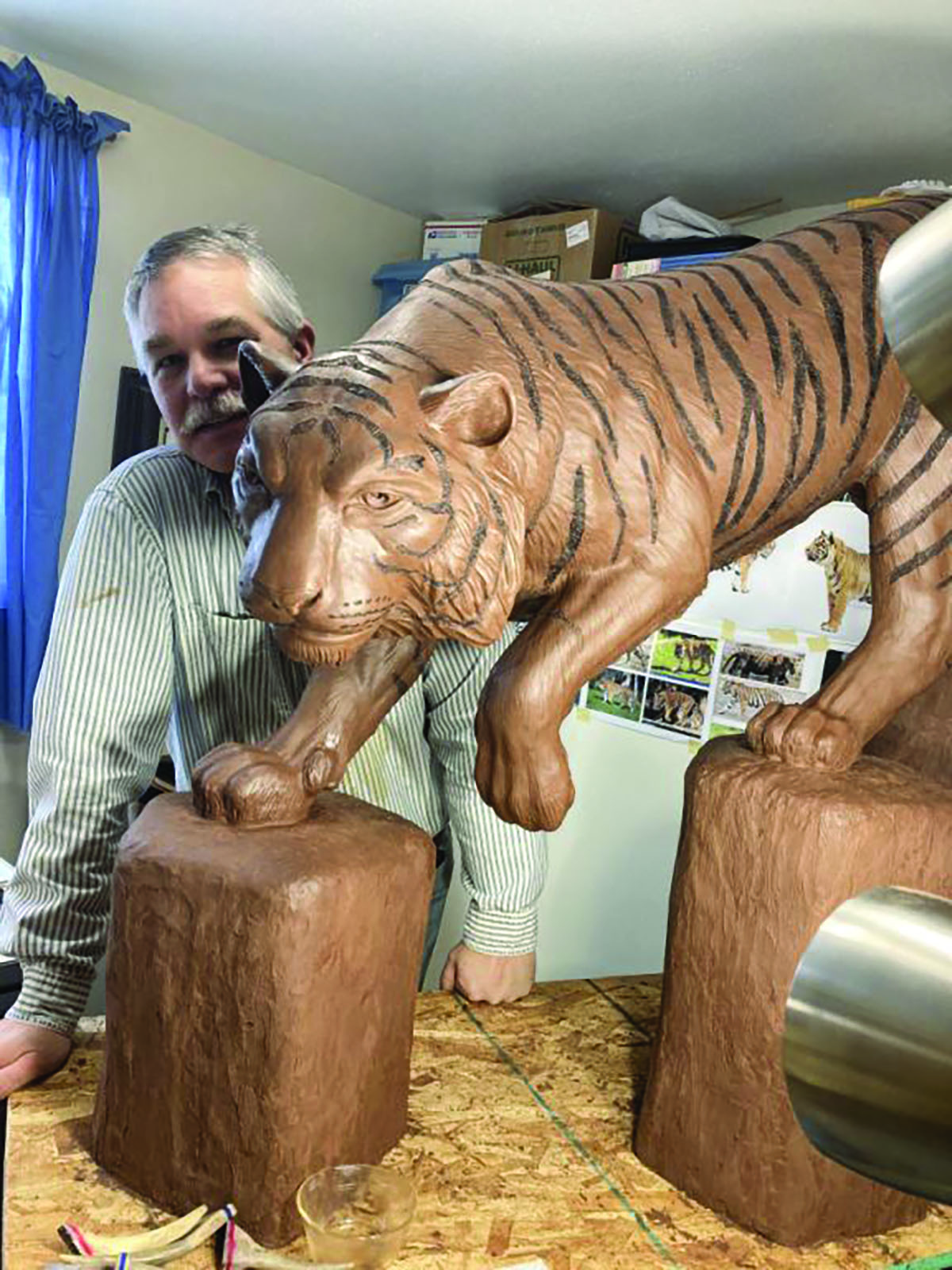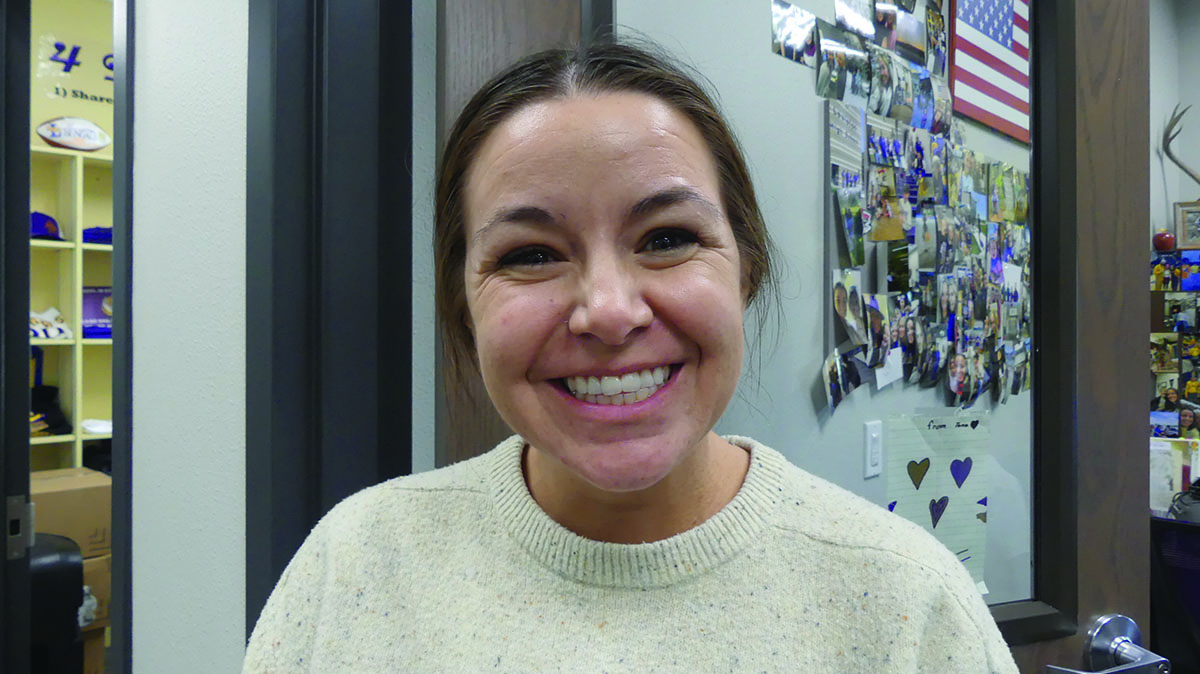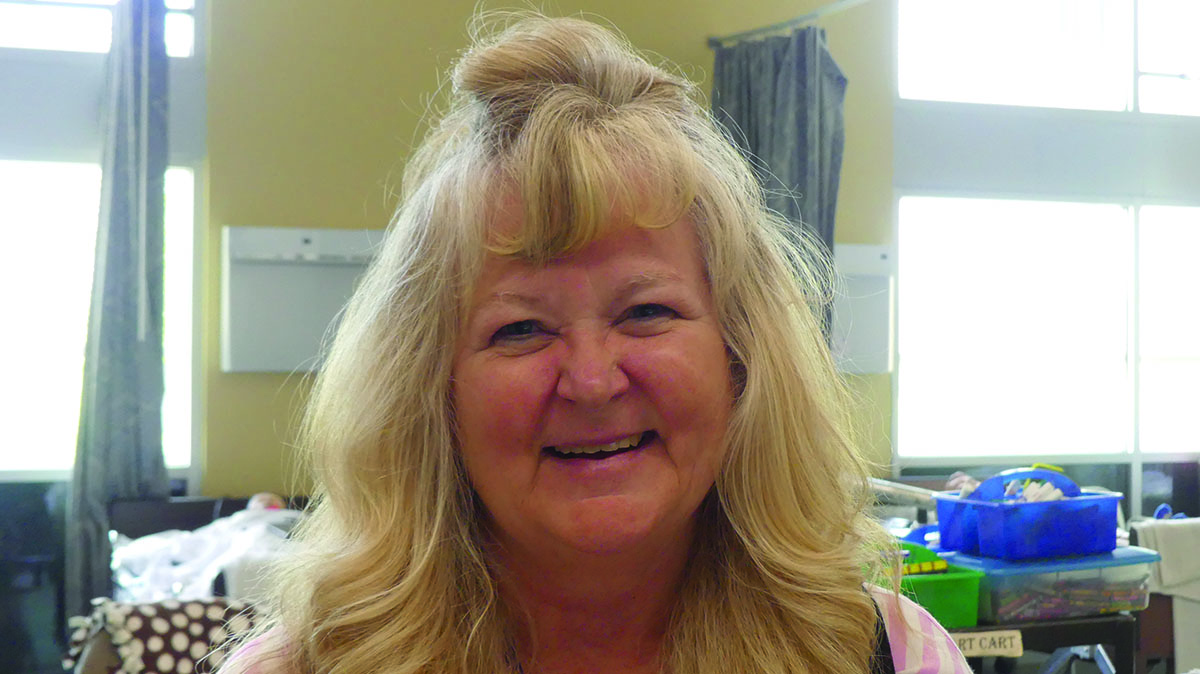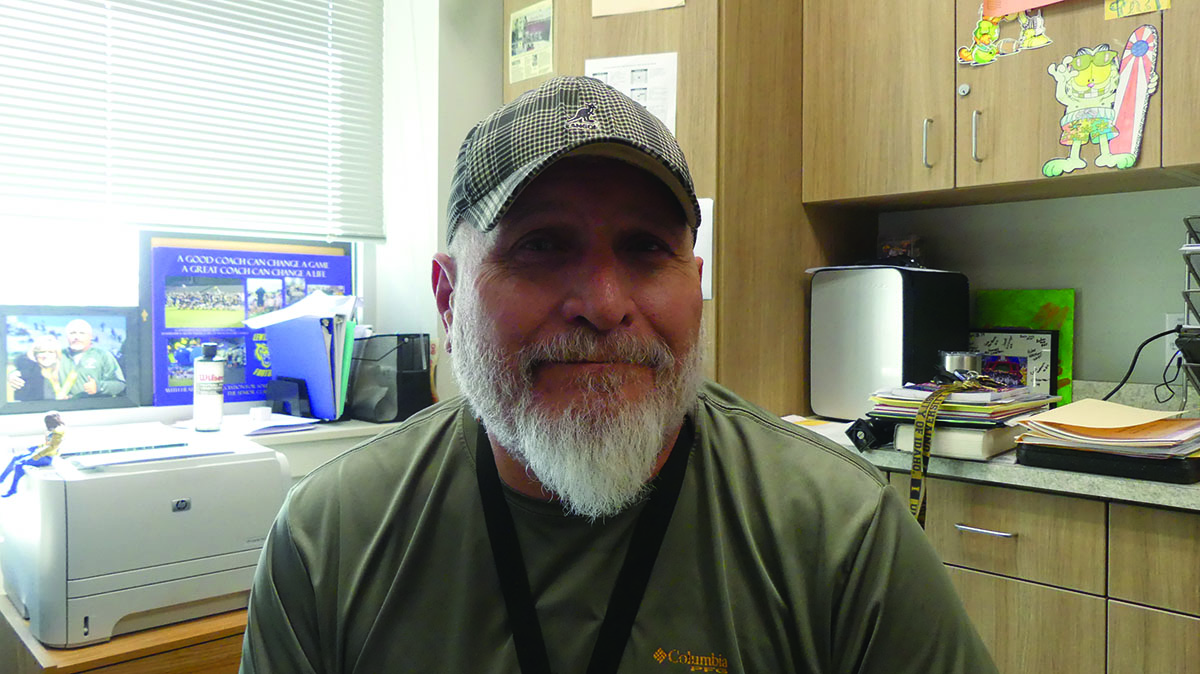By now, most have become accustomed to the impressive Bengal monument placed in front of Lewiston High School. However, some may wonder who is credited for its design and creation. Shayne L. Watkins, a graduate of the class of 1984, spent roughly one year sketching, sculpting and painting the remarkable statue.
According to Watkins, district staff initially asked his step-father-in-law, Lewiston artist Ralph Crawford, to take on the project. Unfortunately, however, Crawford was unable to sculpt any longer, so he passed the request on to him.
“I was immediately interested, and began taking steps to make the challenge a reality.”
On July 27, 2022 Watkins contacted Sara Blume from the district office in attempts to allow him to create the sculpture.
“I explained that I excelled in the Industrial Crafts and Arts program at LHS [from] 1981-1984 and learned the art of bronze casting from Bob Murphey, the metal shop instructor.”
According to Watkins, the District office provided an image of a Bengal tiger walking down an incline slope as a reference for his monument, and he took it from there.
“I did have conversations with Mr. [Lance] Hansen and other District staff regarding design elements such as male or female, degree of muscle definition and hair texture and expression of the tiger. We all agreed that an imposing figure with an assertive or authoritative demeanor… would be best.”
The statue’s creation took a little over a year to design and create.
“The design didn’t take me very long. I had a rough sketch and an armature built for the first 12 [inch] model in less than 8 hours… Then I spent four months sculpting with clay, October 2022 – January 2023.”
Watkins then goes on to explain that after he got Superintendent Hansen’s approval for the basic design, he went on to make a 36 inch model, which took him roughly 189 hours.
“Once I completed the 36 [inch] model and got Mr. Hansens’ final approval of the design and details, I transported it to Form 3D Foundry in Portland, OR, where it was scanned with laser technology, then digitally enlarged 300% to the monumental scale of 1.5 life-size.”
While he used wood, wire and styrofoam to build the model armatures (internal support structures), and oil based clay to sculpt the proportions and muscles, the full sized bengal was designed by multiple 3D printed soft panels made from molten copper and tin that were “welded together like a giant jig-saw puzzle.”
The final step of completing the monument was fabricating its color which was achieved through a tri-color chemical patina (coloring process) and several coats of lacquer.
“I am so proud of the Bengal monumental sculpture,” Watkins said, “ I am grateful to the District staff, School Board members, and the donors for having confidence in my ability to complete this assignment.”







